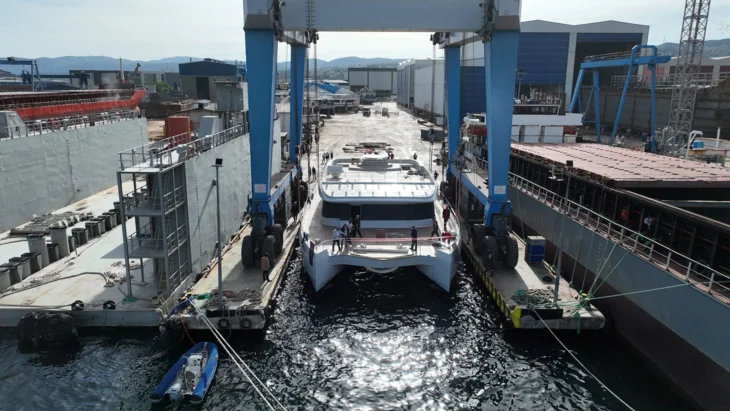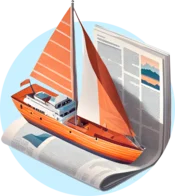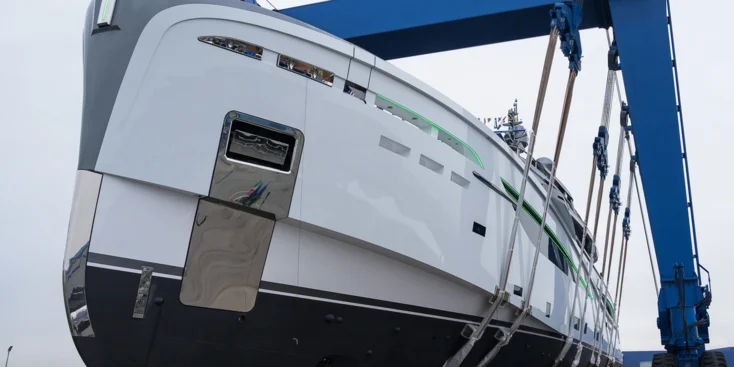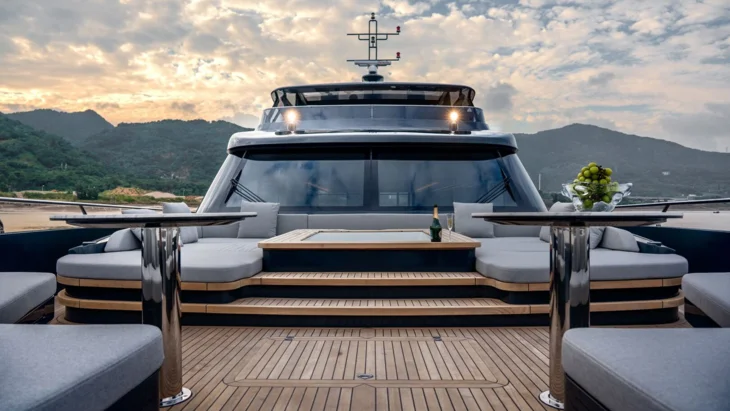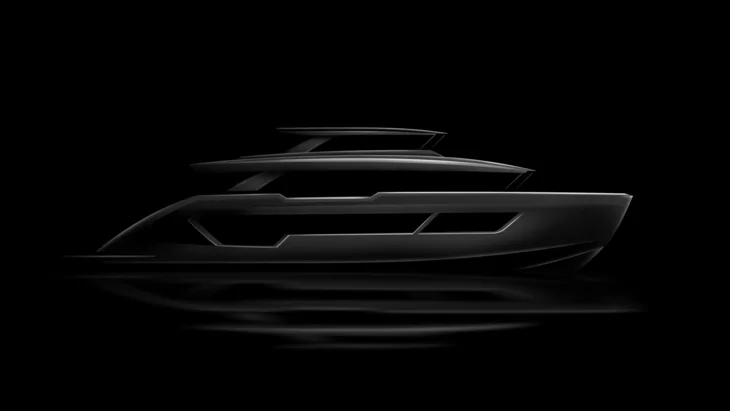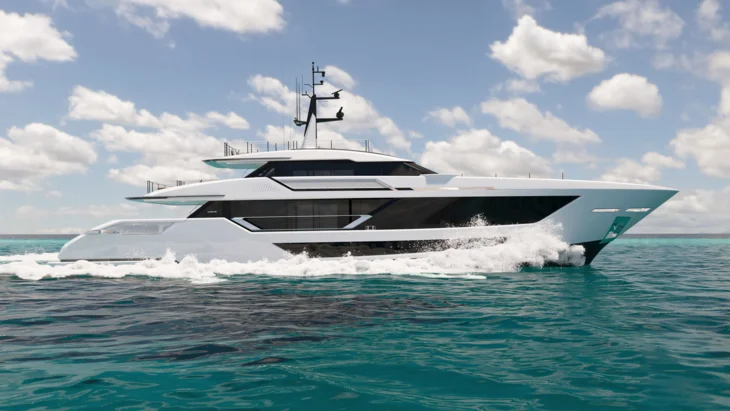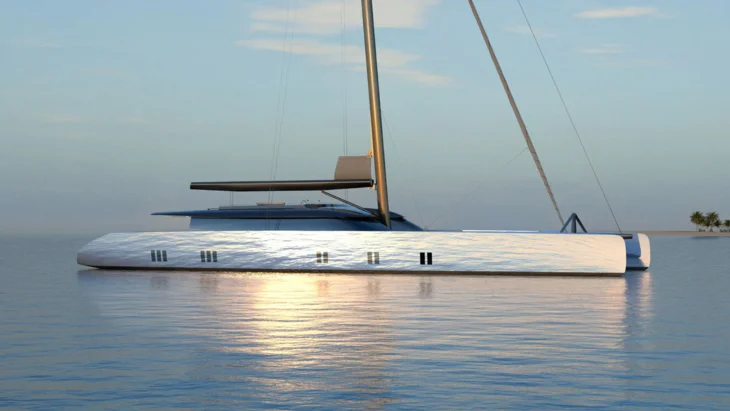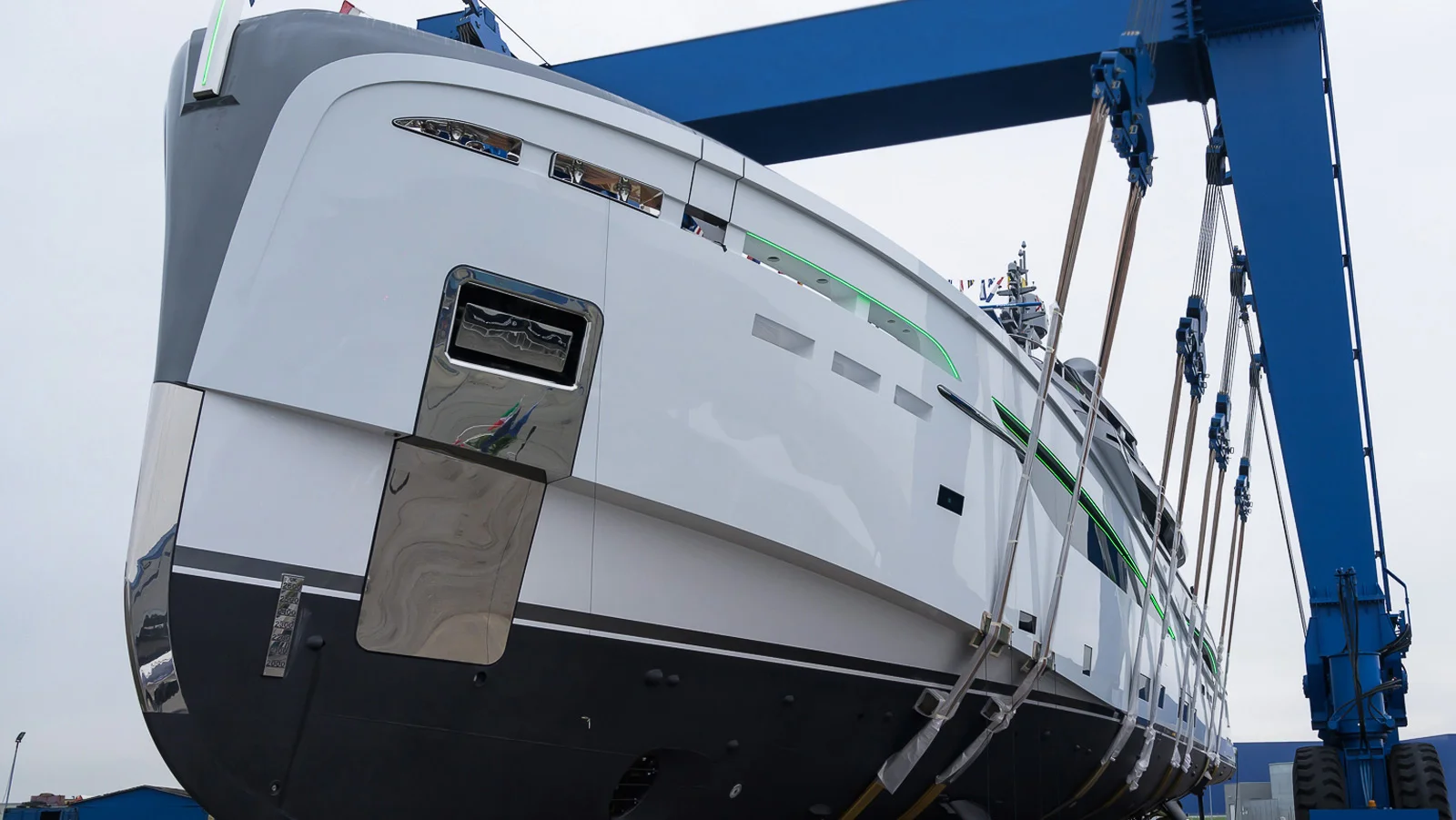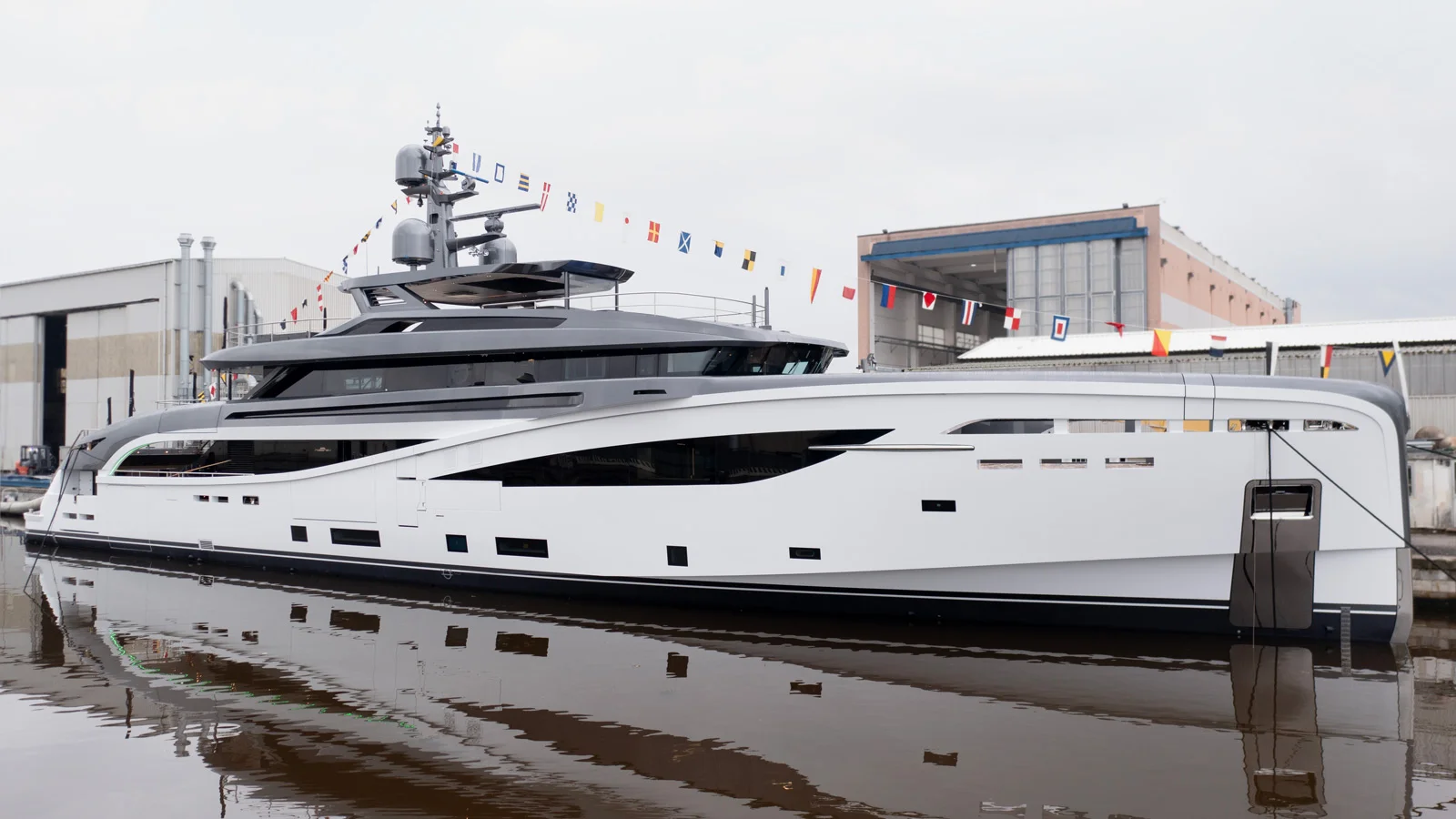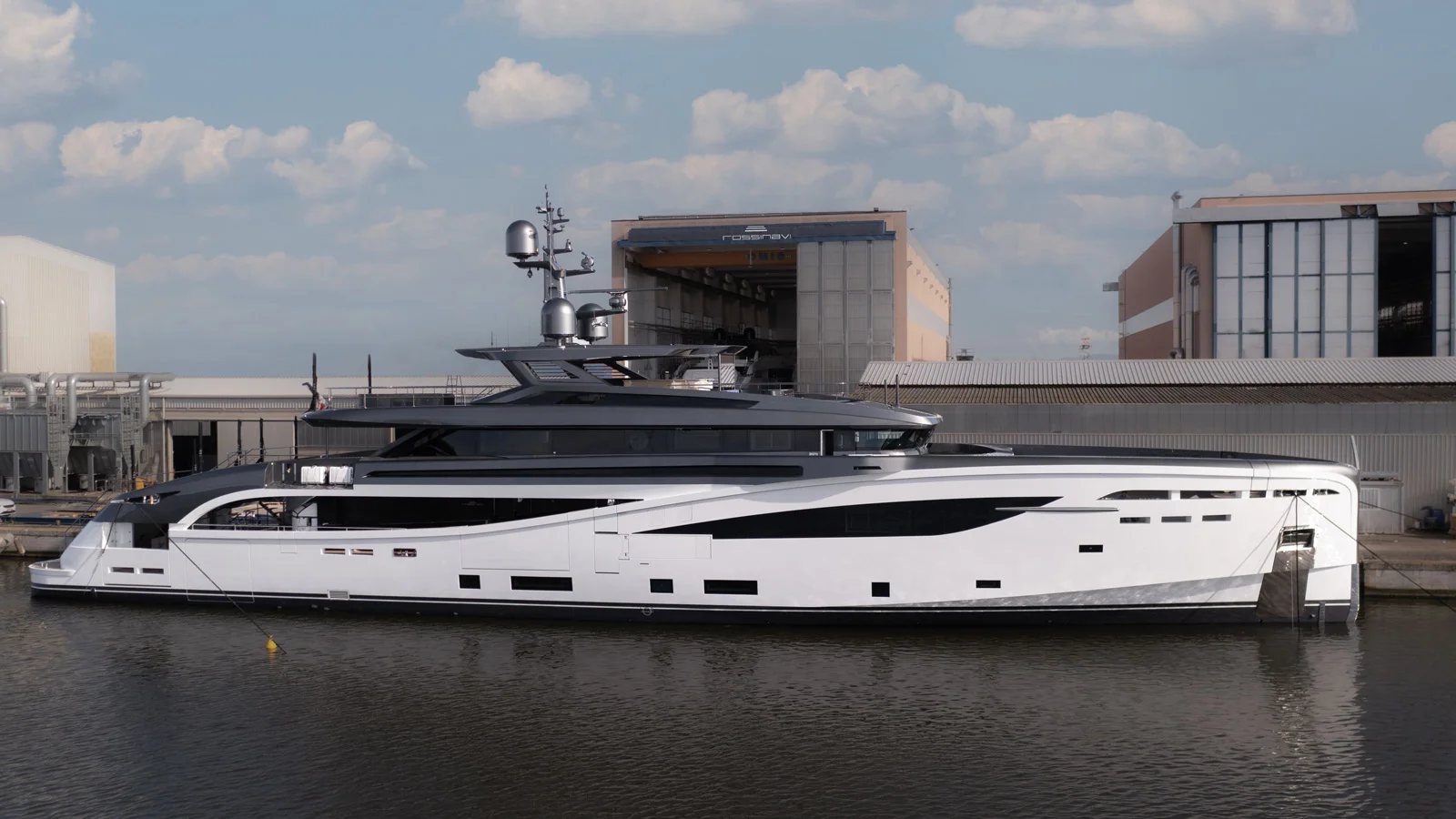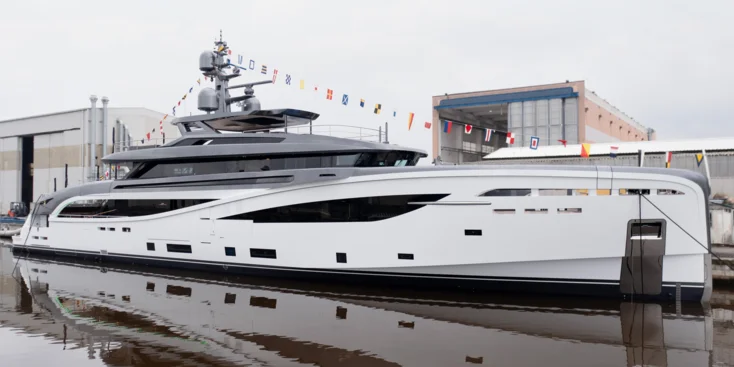
The Bel1 launch took place at the Rossinavi facility n Pisa. To create the exterior of the superyacht the shipyard collaborated with Fulvio De Simoni Yacht Design, while Enrico Gobbi and his Team for Design were responsible for her interiors
When creating the Bel 1, the emphasis was made on the innovative and original style, as well as the distinct personality of the superyacht. The inner spaces turned out to be amaizingly ample, while the exterior areas are comfortable and functional.
Thanks to the high bow and the low superstructure integrated smoothly into the hull, the yacht does not look bulky: the disigners managed to preserve the overall sleekness and softness of her outline and make the appearance elegantly modern.
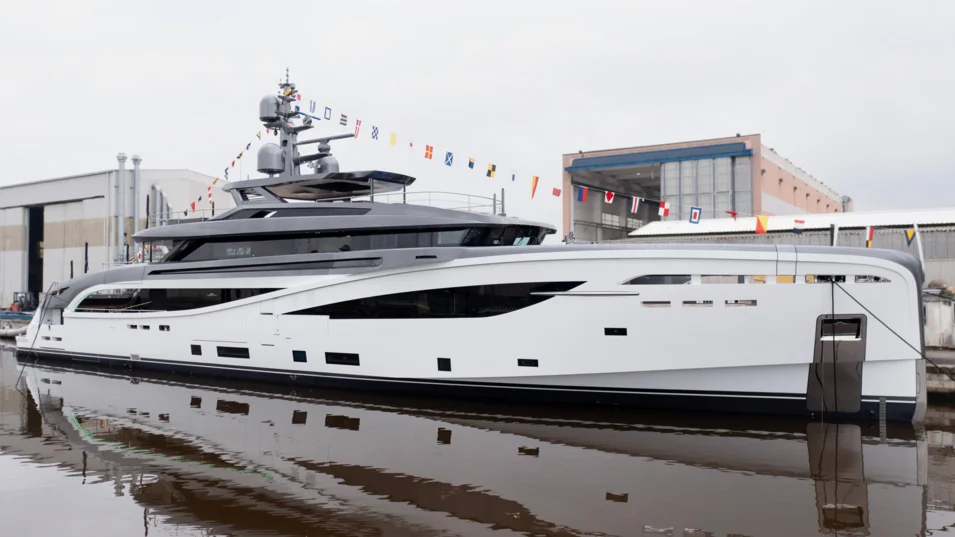
Two “cuts” in the hull interrupt the linear nature of the profile and add dynamics to it. At the same time they allow natural light to flood inside the saloon on the main deck and the dedicated owner’s area forward.
The bow section of the vessel has been given special attention and, according to Rossinavi, it has become an “iconic element” of the boat.
Rather unusual architecture has been developed for the aft part, too, resulting in generous and functional open spaces at different levels.
The staggered decks allow one to perceive the aft of the boat as a single, large open area. For instance, the mezzanine between the main and the upper decks seems to connect the two main levels of the vessel.
The cockpit on the main deck provides a high level of privacy. There is a dining area that can be enclosed with sliding glass panels, which allow one to use it even in bad weather. There is another “four seasons” dining area on the upper deck.

Thanks to the fold-out bulwarks and transom at anchor the beach club turns into a spacious terrace with a sea view.
The flybridge occupies a vast area of 145 square metres. There is a sunpad aft, a small pool at the bow, and a lounge with sofas and a bar amidships.
“The goal was to combine stylistic coherence with extra dimensions. For example, on the 145 square-meter flybridge,” explains Federico Rossi, Chief Operating Officer of Rossinavi.
Four stabiliser fins will take care of the guests’ comfort both at anchor and during the passages. The yacht with an aluminium hull and superstructure will be powered by twin diesel Caterpillar engines.
"We are very satisfied and proud of this project, which, due to its originality and architectural complexity, has been quite challenging. However, at the same time, it has allowed us to express our creativity in inventing new forms without compromising functionality and the enjoyment of life on board the ship,” says Fulvio De Simoni, Founder of Fulvio De Simoni Yacht Design.
You have successfully subscribed to our newsletter
